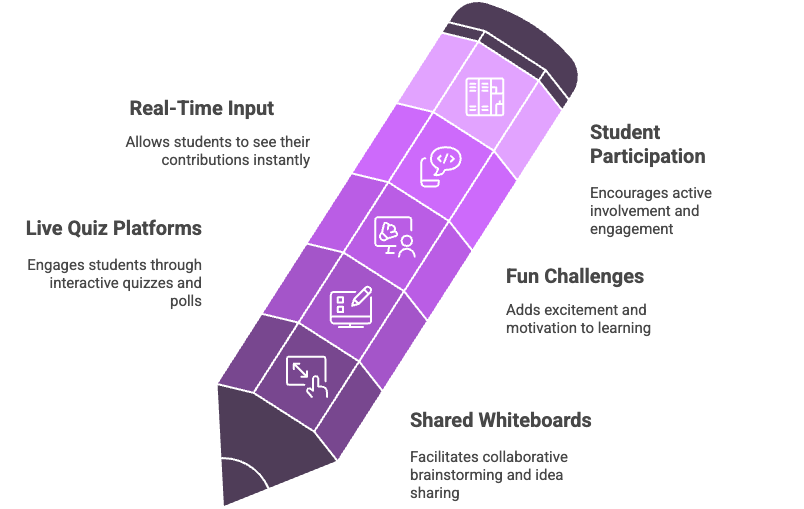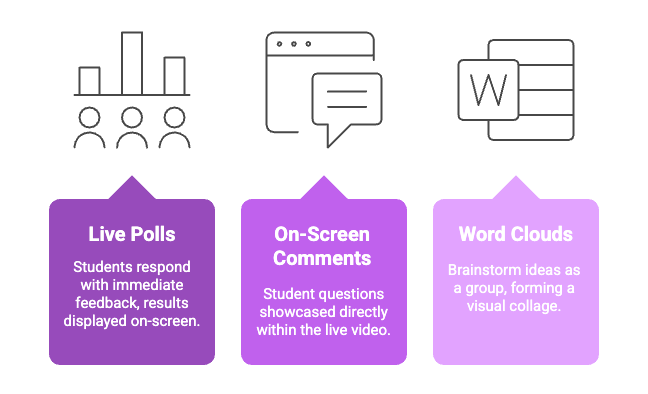Virtual Learning: Best Tools for Making Remote Lessons Fun and Engaging
Discover helpful ways to spark engagement in remote lessons. Explore online tools that keep classes lively and interactive, ensuring fun learning for all.

Many students need fresh ways to stay excited during online lessons. Early in the day, it can help to seek assistance with “write my paper for me” when tasks feel endless. This extra support may let you focus on making remote sessions more lively. Virtual learning has grown in importance, and people want interactive learning experiences that keep them focused. Basic lectures often leave learners bored, so it helps to explore tools for teachers who aim to boost engagement.
1. Turning Lessons into Vibrant Experiences
Online tools can significantly improve your remote lessons experience. These apps move beyond static slides and transform lectures into engaging events. E-learning tools bring color and movement to the screen, and platforms like LiveReacting are at the forefront of this shift. By integrating shared whiteboards, live quiz platforms, and fun challenges into a single, easy-to-use studio, LiveReacting helps educators create an environment where students don't just watch—they participate. When learners can see their input appear on screen in real time, they feel more connected and ready to learn.
2. Embracing Real-Time Interaction
Interaction is key to keeping everyone on track. In a virtual learning space, a platform like LiveReacting ensures each student feels seen and heard. Instead of simple one-way teaching, instructors can use interactive tools to foster teamwork and curiosity. With LiveReacting, it's easy to set up:
- Live Polls & Quizzes: Invite students to respond with immediate feedback. You can instantly display the results on-screen to spark discussion.
- On-Screen Comments: Showcase student questions and comments directly within the live video, making them part of the conversation.
- Word Clouds: Brainstorm ideas as a group and watch them form a visual collage in real time.This level of involvement makes lessons more than just text on a screen. Students become active participants, which keeps them interested from start to finish.

3. Dynamic Screen-Sharing and Presentations
Screen-sharing is quite essential for remote lessons. While standard platforms allow teachers to broadcast a document or image, LiveReacting enhances this by turning presentations into interactive experiences. Educators can stream a pre-recorded video lesson or a slideshow and overlay it with custom graphics, logos, and branded colors. This creates a professional, TV-show-like feel. Furthermore, you can layer interactive elements like a live Q&A or a pop-up poll directly over your presentation content. This encourages students to engage on a deeper level and keeps the session flexible and exciting.
4. Collaborative Whiteboards for the Digital Age
A shared whiteboard turns a digital class into an active community. While traditional whiteboards are about drawing, the core idea is collective brainstorming. LiveReacting achieves this with interactive tools that invite real-time input from the entire class. For example, instead of asking students to write on a digital board one by one, a teacher can pose a question and use the Word Cloud feature. As students submit their answers, a dynamic cloud of ideas forms on the screen for everyone to see. This brings a powerful sense of teamwork to virtual learning and gives quieter students a chance to contribute their thoughts visually.
5. Boosting Engagement with Fun, Game-Based Learning
Gamification adds a jolt of excitement to any lesson. When students see a friendly contest or a fun challenge, they immediately perk up. LiveReacting’s game templates are perfect for this, allowing teachers to transform quizzes into thrilling competitions. You can host a live trivia game complete with a real-time leaderboard, or run a "Guess the Picture" challenge. These high-energy games give students an extra reason to pay attention and improve memory retention as they recall facts to win. Most games are easy to set up with just a link, allowing students to join instantly and see their scores update live.
6. Enhancing Live Streams Beyond Video Conferencing
A strong virtual classroom experience is more than just a grid of faces on a video call. While tools like breakout rooms are useful, LiveReacting focuses on enhancing the main live stream that everyone is watching. It adds a layer of interaction that traditional video conferencing apps lack. By displaying real-time comments, reactions, and poll results directly on the screen, teachers create a more inclusive and engaging environment. Live captioning can also be integrated to ensure no one gets left behind due to audio issues. This approach transforms a standard broadcast into a fully interactive event where every student feels involved.
7. Making Quizzes and Polls Interactive and Fun
Testing is necessary, but it doesn’t need to be stressful. With LiveReacting, teachers can build short, engaging quizzes and polls that feel more like a game than a test. Students can click through multiple-choice questions or vote in a poll, and the results can be displayed on-screen instantly. This immediate feedback is perfect for quick comprehension checks and helps drive the lesson forward. By integrating these quizzes directly into a live stream, teachers can keep everyone alert and create a beneficial cycle of learning, testing, and growth in a low-pressure, engaging format.
8. Taking Virtual Field Trips to the Next Level
A virtual field trip can spark immense curiosity. With LiveReacting, teachers can elevate this experience from passive viewing to active exploration. An educator can stream a pre-recorded video of a museum tour or a 360-degree walk through a national park. During the stream, they can pause the video to launch a live poll asking students what they think about a specific artifact or landmark. They can also run a Q&A session, pulling student questions onto the screen to discuss as a group. This transforms students from passive viewers into active explorers who are fully engaged in the journey.
9. Combining Live Discussions with Asynchronous Learning
Discussion boards are excellent for letting students share thoughtful, written responses at their own pace. While LiveReacting focuses on real-time, synchronous engagement, it serves as the perfect complement to these asynchronous tools. A teacher can host a live-streamed Q&A session or a debate using LiveReacting to kickstart a conversation and generate initial excitement. The most interesting questions and ideas from the live session can then be posted on a discussion board for students to reflect on and analyze in greater detail later. This blended approach respects different learning styles and promotes deeper, more inclusive thinking.
10. Conclusion: The Future of Interactive Learning
Remote instruction must go beyond a simple camera feed. By using educational tools like LiveReacting, teachers can cater to each learner’s personal style and create lessons that feel fresh and exciting. Our platform keeps virtual learning alive through honest communication, teamwork, and a pinch of fun. When students feel their input is valued—whether through a poll, a game, or an on-screen comment—they try harder, ask better questions, and explore new ideas. LiveReacting provides the tools to build that engagement, ensuring the digital classroom is a place where every student can thrive.
Transform Your Live Streams with LiveReacting
Join 10,000+ streamers who are boosting engagement and viewership by adding pre-recorded videos, games, polls, and countdowns to their streams.
Try LiveReacting for free today and take your streams to the next level!
